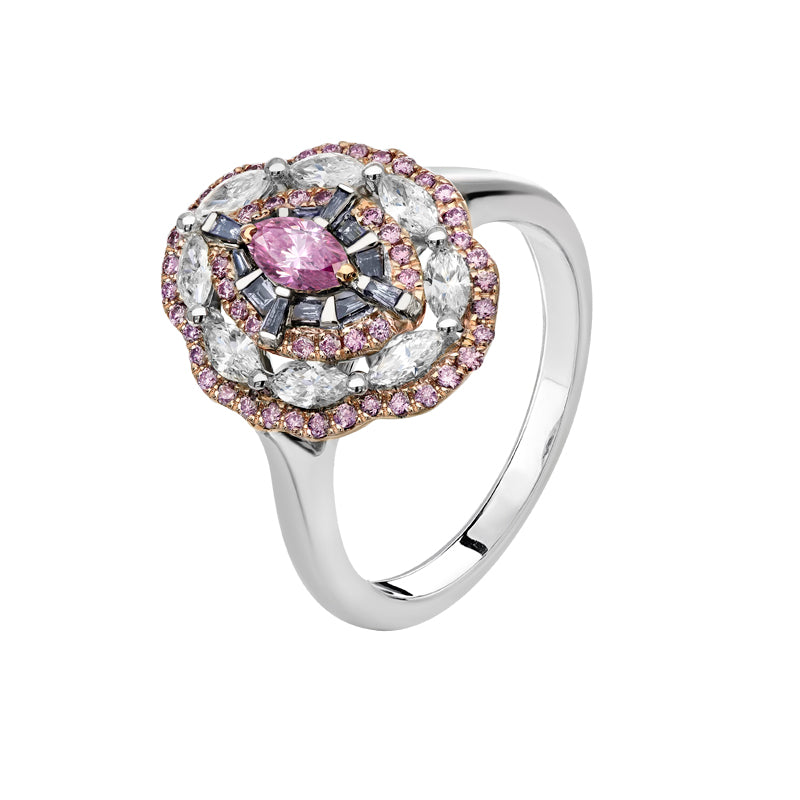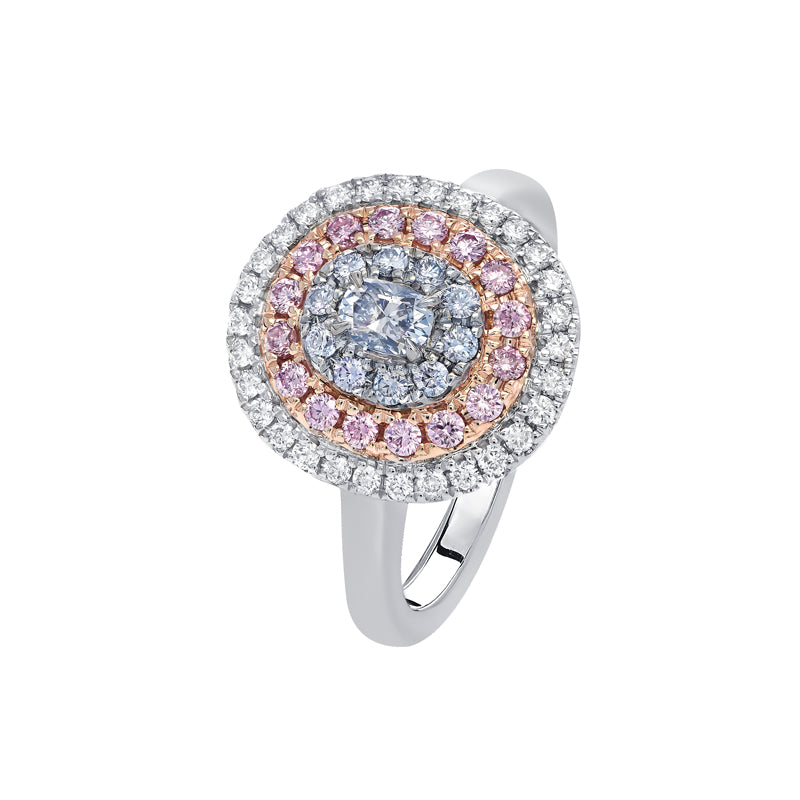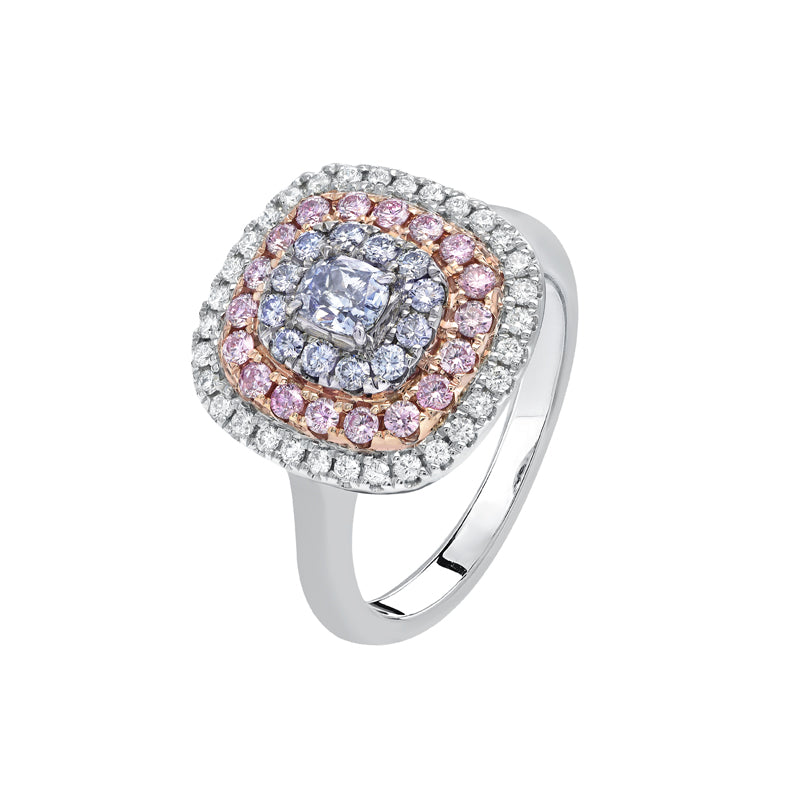Rare Argyle blue diamonds: The Crown Jewels of Coloured Gemstones
Blue diamonds are so much more than your average gem. They’re historical and geological masterpieces.
Stones so rare, their magnificence can only be found in a handful of places on this planet. Adored for centuries for their unique aesthetic, blue diamonds offer an air of mystery that has captured the fascination of royalty, celebrities and collectors worldwide.
Discover why Argyle blue diamonds continue to gain the attention of jewellery lovers and investors, as we dive deeper into their unique history and enduring charm.
A diamond discovery like no other…
There’s a reason why blue diamonds are thought of as nature’s most precious gift. So rare to this earth, the odds of finding a blue diamond in a mine are as low as 1 to 10,000. To find a pure blue diamond is nothing short of a miracle.
These sought-after gems get their deep blue colour from traces of boron in the diamond’s carbon composition. As the amount of boron increases, the concentration of the blue colour also increases. It’s thought that nitrogen plays a role in determining colour intensity, so if nitrogen levels are low while the diamond forms, the stone will emerge a richer, rarer blue.
The earliest recorded blue diamond, the Hope Diamond, was discovered in India back in the seventeenth century. A once-in-a-decade find, there are only three mines in the world that have produced natural blue diamonds - the Cullinan mine in South Africa, the Golconda mine in India and the Argyle mine in the Kimberley Region of Western Australia.
Before its closure in 2020, the Argyle mine was the world’s largest supplier of pink diamonds. Amazingly, rare blue and violet diamonds in a beautiful array of shades were also discovered there. After red diamonds, Argyle blue diamonds are the rarest of all coloured gemstones, with an exceptionally high value. The true pinnacle of luxury.
The value of blue diamonds
Today, supply-demand imbalances make it much harder for investors and jewellery collectors to get their hands on these precious Australian gems.
Blue diamonds are Type IIb diamonds, which astonishingly account for just 0.1% of the world’s coloured diamonds. Unlike colourless diamonds, the value of blue diamonds mostly lies in their colour; the more intense and pure the blue, the greater the price tag. The colour grading scale includes Faint Blue, Very Light Blue, Light Blue, Fancy Light Blue, Fancy Blue, Fancy Intense Blue, Fancy Deep Blue and Fancy Vivid Blue.
In 2021, one of the most historic sales of modern times occurred when mining corporation, Rio Tinto, auctioned off a rare collection of Argyle blue and violet diamonds named 'Once in a blue moon'. The incredible collection from the Argyle mine was purchased by Hong Kong fancy coloured diamond specialist, Kunming Diamonds. Incredibly, the total carat weight was 24.88 carats.
"We cherish becoming the custodians of the final Australian treasures from this iconic and industry-defining mine, and look forward to unearthing the incredible possibilities in the years to come."
- Harsh Maheshwari, Kunming Diamonds
Famous blue diamonds in history
By David Bjorgen - Own work, CC BY-SA 3.0, https://commons.wikimedia.org/w/index.php?curid=5254
The Hope Diamond
Mined in India in the 17th century, the Hope Diamond has been famed as the largest deep blue diamond in the world.
At 45.52 carats, it holds an incredibly rich history, involving royalty.
Its story began when French merchant traveller, Jean Baptiste Tavernier, purchased a 112 3/16-carat diamond in incut form.
He cut the gem, renaming it "the French Blue" (Le bleu de France), before selling it to King Louis XIV of France in 1668. In 1792 it was stolen and re-cut.
The first reference to the diamond's next owner appears under the Hope name in an 1839 gem catalogue from the Hope banking family. The catalogue doesn’t reveal how Hope acquired the diamond or how much he paid for it.
The Gemological Institute of America (GIA) graded the diamond, describing it as fancy dark greyish-blue. The diamond has been compared in size and shape to a pigeon egg or a pear-shaped walnut.
Its current value is estimated at an incredible $350 million.
The Wittelsbach-Graff
The Wittelsbach-Graff was once a cushion-shape, fancy deep greyish-blue diamond.
At 35.56 carats, this rare stone had an extremely high value. In fact, it was purchased for $23.4 million in 2008 - the highest record for that time.
Back then, it was known as the Wittelsbach Blue, before Laurence Graff, founder of Graff Diamonds, purchased it.
It was originally cut with an unusual pattern of 82 facets before it was re-cut by Graff, losing 4.45 carats to a total 31.06 carats. This also changed the grading of the diamond to a fancy deep blue IF.
Graff sold it in 2011 to the emir of Qatar, Sheikh Hamad bin Chalifa. Today, the stone is valued at $80 million.
By 350z33 at English Wikipedia, CC BY-SA 3.0, https://commons.wikimedia.org/w/index.php?curid=12218686
The Sultan of Morocco
Described as “an intriguing gem” this blue diamond holds a regal history that remains a mystery.
While the name suggests a linkage with the ruling families of Morocco, the Sultans, the diamond is believed to have emanated from the Kollur mines in India in the mid-19th century.
We now know that It was previously purchased by Russian Prince Nikolai Borisovich Yousupov in 1840. However, details of the purchase or its price remain somewhat of a question mark.
By 1922, the diamond was owned by Prince Felix Yousoupov II, who left Russia and sold it to Cartier of New York.
At 35.27 carat, the cushion-cut, greyish-blue diamond is a rare type 11b diamond, and likely the fourth largest natural blue diamond in the world.
In 1972, the Sultan of Morocco was sold to a private American collector for around $250,000.
The blue diamond appeal to investors and buyers
Add some sparkle to your portfolio
Just 1% of all the mined, coloured diamonds in the world are blue diamonds. It’s believed that for every 25 million carats of diamonds extracted from the Argyle mine, a single blue diamond is found.
Since blue diamonds are a one-of-a-kind asset, gem collectors and investors can look to these unique stones as a viable way to form a diversified portfolio. Though they’re highly sought-after, blue diamonds are simply so rare that they’ll never depreciate in value, solidifying them as one of the most unique investment opportunities.
With many investors looking to capitalise on this, interest is only increasing. One article by The Telegraph describes how the super-rich are looking to ultra-rare precious gemstones as a “safe store for their wealth”.
Since the Argyle mine’s closure in 2020, Argyle blue diamonds are even harder to come by. On top of that, the striking colour, clarity and symbolism of blue diamonds in many cultures are causing prices to hike up considerably. In a nutshell, the market has an insatiable appetite for blue diamonds.
Before investing in blue diamonds, do your own research. Check market conditions and keep in mind that diamonds are illiquid assets.
*Nothing in this blog is to be taken as investment advice
"Blue diamonds have gained a wider following, not only because they are stunning, but because there are so few of them available in the world."
- François Curiel, jewellery specialist and Chairman of Christie's
The gem of all gems
Today, blue diamonds continue to steal the show.
You might remember the fictional Heart of the Ocean necklace from the Titanic movie, tossed in the ocean by the beloved Rose. Inspired by the one-of-a-kind blue Hope Diamond, the stunning prop would have been worth more than $500 million had it been real.
In current times, we’re seeing designers and fashion brands seeking inspiration from luxury blue diamonds, to create costume jewellery accessible for all.
At Pink Kimberley, we focus less on accessibility and more on intricate pieces inspired by Australia’s natural beauty. We combine Argyle blue diamonds with contemporary design. The result? True works of art. Our exquisite range of rings, earrings and pendants simply cannot be replicated.
Whether you’re an investor or collector, explore the artistry of some of our most precious pieces.
Kimberley Blue Danube Ring

Kimberley Simona Oval Ring

Kimberley Simona Cushion Ring

Your blue diamond story begins now...
Every blue diamond has a tale to tell. From the mines of India to the palaces of Europe - there’s nothing ordinary about how these gems came to be.
Today, these one-of-a-kind gemstones continue to enchant us all as they become rarer, and shaped into jewellery that merges the magic of the past with the modern world.
These gems demand a little extra love because of their rarity and value, so we recommend seeking professional advice about storage and cleaning recommendations.
If you’re in the market for an argyle blue diamond, book a consultation at Pink Kimberley to browse our collection and learn more about our precious stones. Appointments are available in-store and virtually.
